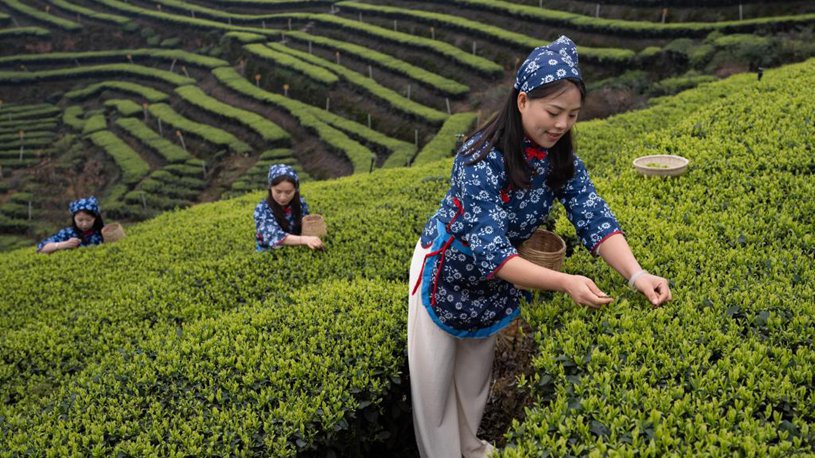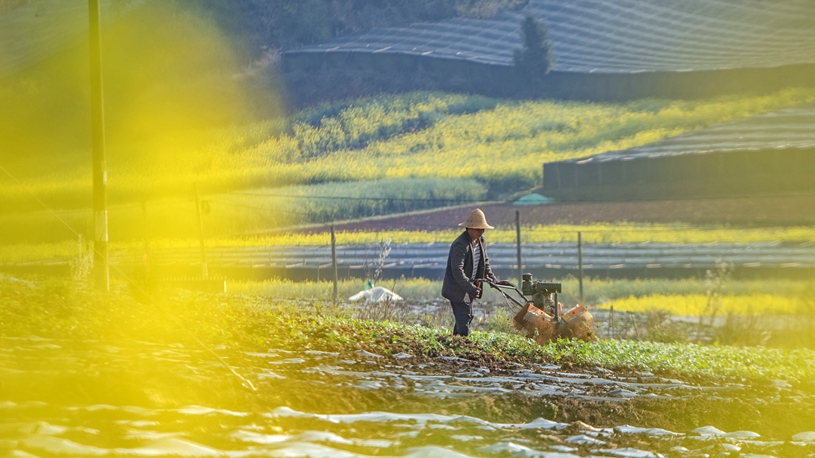URUMQI, March 13 (Xinhua) -- Wang Yunfeng, who is in charge of a farmers' cooperative for aquaculture in Dongbag Township in Shache County, located in northwest China's Xinjiang Uygur Autonomous Region, was struck by the astonishment on the faces of local villagers upon seeing the Australian freshwater crayfish for the first time.
Living in southern Xinjiang with the expansive Gobi Desert for generations, the locals, who have endured poverty, struggled to comprehend how people outside the region considered this "unusual" aquatic product a delicacy.
Australian freshwater crayfish, originally from the tropical regions of northern Australia, are often cultivated in the eastern coastal provinces of China.
Since 2021, when having completed six months of aquaculture training in Shanghai and east China's Shandong Province, technician Mubarek Abulaiti has been leading a team of over 10 breeders responsible for aquaculture in around a dozen ponds in the farmers' cooperative.
Although far from the sea, the unique geographical advantage of being located along the Yarkant River gives Dongbag Township the possibility to develop aquaculture. In addition, the township boasts a wide range of crops such as wheat and beans, and these green agricultural products can become ideal feed for aquatic products, such as crayfish, crabs and fish, after simple processing, Mubarek Abulaiti explained.
The arrival of the Australian freshwater crayfish piqued the curiosity of people in Dongbag and its surrounding areas. The production process of the crayfish, including breeding, fishing and packaging, has also become a source of fascination for the villagers.
"I winced in pain as the crayfish's pincers caught my fingers. The villagers burst into laughter that seemed to last forever," said Mutellip Tursun, a breeder in the cooperative.
Over time, the Australian freshwater crayfish gained increasing acceptance among the locals. "Now, with the penetration of internet and smartphones in the village, everyone knows that the crayfish bred here is an expensive delicacy in big cities," said Mutellip Tursun, adding that the villagers even "brag" to their relatives and friends in other places about the local crayfish.
On holidays, the villagers would also put a plate of crayfish next to their local cuisines, such as laghman and roast meat, as a main course for the family dinner.
Before this year's Spring Festival holiday, the cooperative secured orders from distributors in several cities, including Xi'an and Lanzhou in northwest China, and even the eastern metropolis of Shanghai. It is currently in talks for collaboration with some large chain supermarkets, according to Wang.
"Crayfish have served as a window to the outside for the villagers," said Abulait Memet, head of Dongbag Township, noting that unlike their earlier generations, who primarily lived off a few acres of fields and some cattle, the younger villagers are now focusing on new business models and societal developments.
According to Abulait Memet, in recent years, new ventures, such as tropical fruit cultivation, flower and tree cultivation for ceremonies, and ornamental bird breeding, have also emerged in the surrounding townships. "It is almost always youngsters who start these new projects."
Upon graduating from college, Atungul Abdukram, Mubarek Abulaiti's friend also in Dongbag, set her sights on the downstream industry of Australian freshwater crayfish, and decided to start a business using the popular e-commerce model. "I plan to sell crayfish bred in my hometown online so I can directly deal with sales enterprises in other cities across China," she said.
After the Spring Festival holiday, Dongbag Township launched a series of projects including an "aquatic town" and the construction of scenic spots for fishing and leisure.
"Many young villagers are now eager to explore new avenues for employment and business. Perhaps soon, besides crayfish farming, we'll see a variety of novel ventures emerging here," Abulait Memet said. ■












